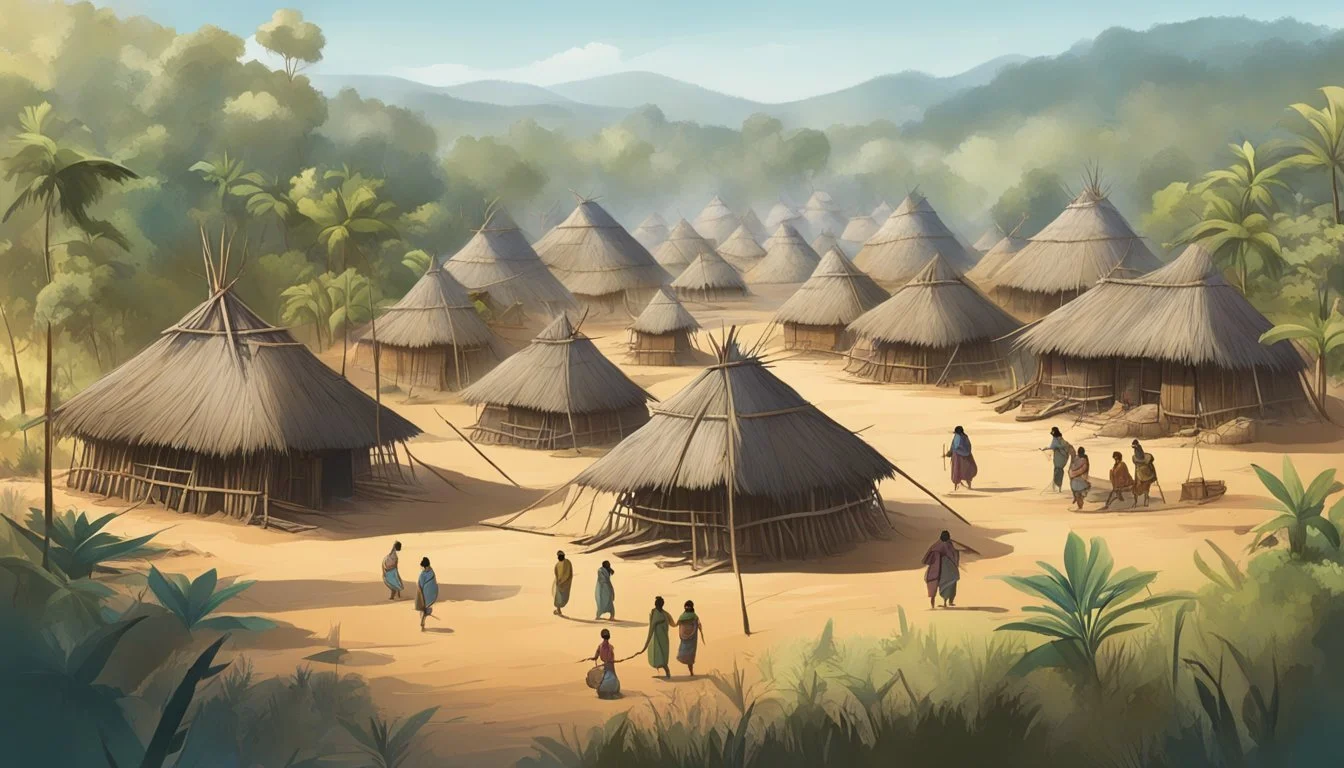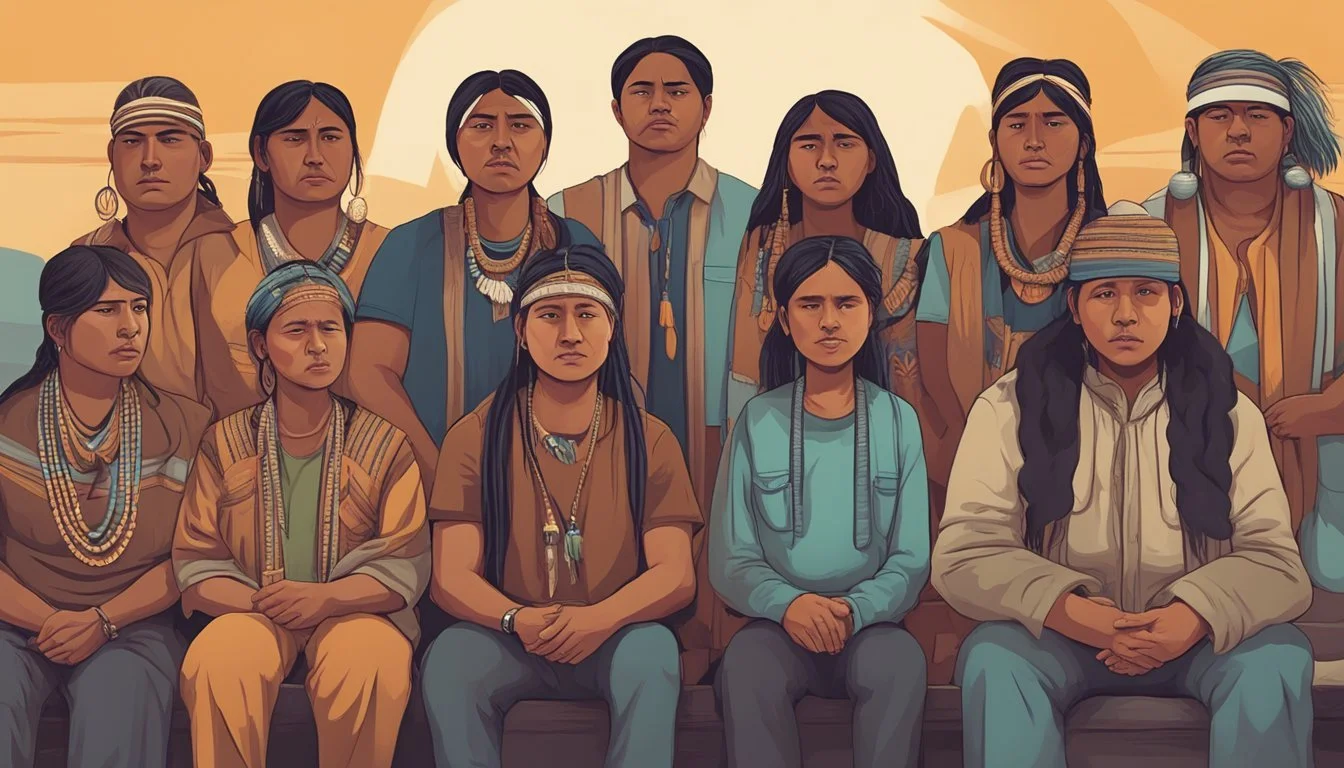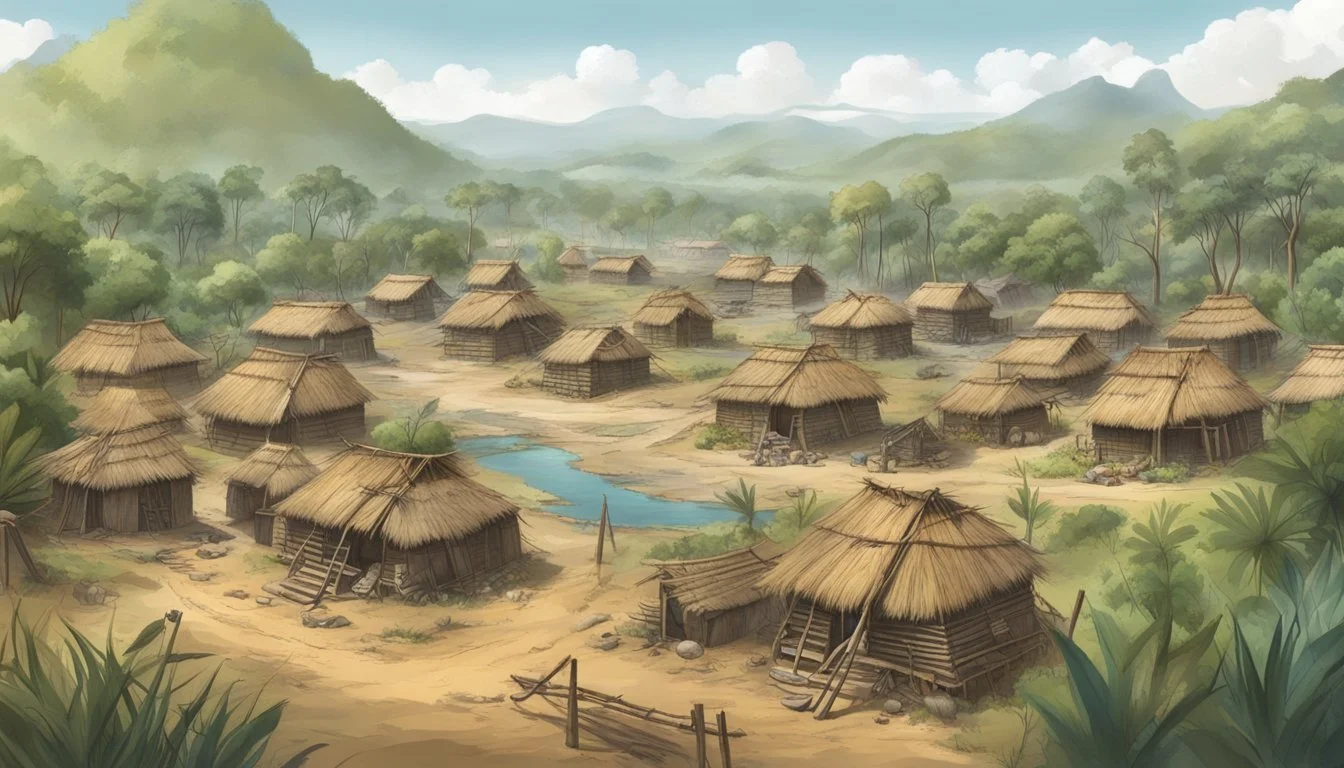6 Types of Trauma That Can Occur in Indigenous Communities
Understanding the Impact
Indigenous communities around the world have faced numerous challenges over centuries, deeply impacting their mental, emotional, and cultural well-being. These challenges often stem from historical events and systemic oppression, which have resulted in various forms of trauma.
Understanding the different types of trauma that affect Indigenous peoples is crucial in addressing their needs and supporting their healing processes. By exploring these traumas, we can gain insight into the unique experiences of Indigenous communities and highlight the importance of culturally informed interventions.
1) Historical Trauma
Historical trauma refers to the collective emotional and psychological damage passed down through generations among Indigenous communities. Rooted in events like forced displacement, boarding schools, and colonization, the trauma has ongoing impacts.
One characteristic of historical trauma in Indigenous populations is its widespread effect. Many community members experience distress as a direct result of these historical events.
The traumatic events were often carried out with intent to destroy Indigenous cultures and communities. This destruction has led to long-term effects on mental health and well-being.
Research has shown that historical trauma can manifest as persistent stress, coping challenges, and intergenerational grief. This further complicates the path to healing and resilience for many Indigenous people.
Increased awareness and targeted interventions are essential for addressing the deep-seated impacts of historical trauma. Healing strategies must consider the unique historical contexts and present-day realities of Indigenous communities for meaningful progress.
2) Cultural Displacement
Cultural displacement profoundly impacts Indigenous communities. It occurs when individuals or groups are forcibly removed from their ancestral lands, disrupting their traditional way of life.
Such displacement often results in the loss of cultural practices, languages, and community bonds.
Historical events, including colonization and enforced relocation, have led to significant cultural displacement. Indigenous peoples, separated from their land, may face difficulties preserving their heritage and maintaining cultural continuity.
This trauma can lead to identity crises and feelings of disconnection from one's roots.
In addition to historical events, contemporary issues such as economic pressures and environmental changes continue to threaten Indigenous lands. For instance, development projects and resource extraction often force Indigenous people to relocate.
This type of displacement contributes to ongoing trauma and cultural erosion.
Reconnecting with cultural heritage can be a healing process for those affected. Community efforts aimed at revitalizing language and traditions play a crucial role in mitigating the consequences of cultural displacement.
Understanding the historical context and current challenges of cultural displacement is vital for creating effective support systems and promoting resilience within Indigenous communities.
Cultural displacement remains a pressing issue that requires focused and sustained attention. Addressing it involves not only recognizing historical injustices but also advocating for the sovereignty and rights of Indigenous peoples to preserve their culture and land.
3) Racism and Discrimination
Racism and discrimination are significant sources of trauma for Indigenous communities. These experiences lead to severe mental health challenges, including anxiety, depression, and PTSD. Indigenous individuals often face prejudice and exclusion in various sectors, such as education, employment, and healthcare.
The impact of racism on mental health is profound. Discriminatory practices can perpetuate feelings of worthlessness and undermine self-esteem, leading to long-term psychological harm. Moreover, systemic racism contributes to economic disparities and limited access to essential services.
Racial trauma manifests in various forms. It can include direct experiences of racial discrimination or witnessing discriminatory acts against others. This trauma often leads to a state of constant vigilance and fear, impacting daily life and overall well-being.
In addition to mental health effects, racism affects physical health. Studies indicate that Indigenous populations experience poorer health outcomes due to the stress caused by racial discrimination. Chronic stress from racism can result in conditions like hypertension, diabetes, and heart disease.
Addressing racism and discrimination requires multifaceted approaches. Policy changes, cultural sensitivity training, and community support are essential to mitigate the psychological and physical effects of racism on Indigenous communities.
4) Loss of Language
The loss of language is a significant form of trauma among Indigenous communities. Colonial policies aimed at eradicating Indigenous languages have had profound impacts. Forced assimilation practices, such as residential schools, were instrumental in these efforts.
Children were often punished for speaking their native languages in these institutions. This led to a sharp decline in language use across generations. The impact extends beyond communication; language is deeply tied to cultural identity and heritage.
Losing language means losing unique ways of viewing the world and understanding traditional knowledge. As a result, younger generations may feel disconnected from their heritage and community.
Language revitalization efforts are crucial for healing. Programs focused on teaching and preserving Indigenous languages help combat this form of trauma. These initiatives aid in cultural reclamation and strengthen community bonds.
Addressing the loss of language involves recognizing the historical trauma inflicted and investing in resources for language education. This restoration is pivotal for Indigenous identity and resilience. For more information on historical trauma and language loss, you can read more about historical trauma and healing in Indigenous language cultivation.
5) Environmental Trauma
Environmental trauma in Indigenous communities is the distress caused by environmental degradation. This includes pollution, deforestation, and climate change.
For generations, Indigenous peoples have lived in harmony with the land. Disruptions to their environment often lead to significant stress and trauma. Sacred sites are frequently affected, leading to a loss of cultural heritage.
Industries such as mining and logging further contribute to this trauma. Contaminated water and soil directly impact health and traditional lifestyles.
Additionally, changing weather patterns pose significant challenges. Indigenous communities often face increased frequency of natural disasters, such as floods and wildfires, disrupting their way of life.
Ultimately, environmental trauma affects not only physical health but also cultural identity and continuity. It underscores the need for meaningful engagement with Indigenous perspectives in environmental policies and practices.
Further reading on this topic can be found here.
6) Forced Assimilation
Forced assimilation is a significant form of trauma affecting Indigenous communities. It involves systematic efforts to erase Indigenous cultures, languages, and identities. This practice often resulted in severe psychological and cultural disruption.
Colonization played a key role in forced assimilation. Policies implemented by colonial governments included removing children from their families and placing them in boarding schools. These schools aimed to suppress Indigenous languages and traditions.
One traumatic impact of forced assimilation is intergenerational trauma. The effects of cultural erasure and loss of identity can carry through multiple generations. This is evident in the continued struggles many Indigenous communities face today.
Indigenous planning must address self-governance and the right of self-determination to combat the lasting impacts of assimilation. This includes preserving and reviving Indigenous cultural practices.
Efforts to heal from forced assimilation require culturally appropriate trauma interventions. Recognizing and addressing historical trauma remains critical for achieving true reconciliation.
Understanding Historical Trauma
Historical trauma among Indigenous communities is deeply rooted in the colonial impact on their societies and its generational transmission. Both of these elements highlight the long-lasting effects of past atrocities and their continued influence on present-day well-being.
Colonial Impact
The introduction of colonialism brought significant disruptions to Indigenous communities, including loss of land, culture, and autonomy. Acts of violence, forced assimilation policies, and genocidal acts left deep scars on the collective psyche of these communities. Colonial structures imposed new social, economic, and political systems that disenfranchised Indigenous peoples and marginalized their ways of life.
These changes weren't confined to physical displacement but extended to cultural erosion. Practices such as traditional ceremonies, languages, and kinship structures faced systematic suppression. Residential schools played a pivotal role, removing children from their families to eradicate Indigenous identities. This era of colonization created an environment of sustained trauma that continues to affect Indigenous populations today.
Generational Transmission
The trauma endured by one generation of Indigenous peoples often carries forward to the next. This phenomenon, known as intergenerational or transgenerational trauma, means the descendants of those who directly experienced the original atrocities continue to feel the effects. Emotional and psychological scars manifest in various ways, such as increased rates of mental health issues, substance abuse, and chronic diseases.
Emotionally, these effects can include persistent feelings of grief, loss, and unresolved anguish. Socially, disrupted family structures and community disintegration contribute to long-term impacts. Mechanisms of transmission include behavioral patterns, stress responses, and even epigenetic changes that affect how future generations process stress and trauma. For more details on this intricate process, you may refer to the research on historical trauma.
By examining these aspects, one gains a deeper understanding of the enduring consequences of historical trauma in Indigenous communities.
Cultural Displacement
Cultural displacement in Indigenous communities involves the loss of traditional lands and the disruption of cultural practices. These issues deeply impact identity, social cohesion, and well-being.
Loss of Traditional Lands
The loss of traditional lands severely disrupts the social fabric of Indigenous communities. Traditional lands are more than physical spaces; they hold cultural, spiritual, and historical significance. Displacement from these lands often occurs due to colonization, government policies, and industrial activities like mining and logging.
When communities lose their lands, they also lose access to resources essential for their way of life. This leads to economic hardships and erodes traditional economies. The removal from ancestral lands can result in a profound sense of grief and loss, as these lands are integral to cultural heritage and identity.
The impact extends to the environment, as traditional stewardship practices maintain ecological balance. Without these practices, ecosystems can degrade, affecting plant and animal species that Indigenous peoples rely on. The connection to land is central to Indigenous cosmologies, and losing it affects mental, emotional, and spiritual health.
Disruption of Cultural Practices
Disruption of cultural practices occurs when Indigenous communities are removed from their traditional lands. Ceremonies, rituals, and daily practices are often tied to specific locations, seasons, and natural cycles. When the physical context is lost, so are these cultural expressions.
Relocation can inhibit the transmission of traditional knowledge to younger generations. Elders may find it challenging to teach cultural practices without access to critical sites and resources. This creates gaps in knowledge and weakens cultural continuity.
Moreover, cultural practices often involve communal participation, which fosters social bonds and a sense of belonging. Disruption can lead to social fragmentation, as people are separated from their communities and support networks. The loss of cultural practices can also affect self-esteem and identity, as individuals may feel disconnected from their heritage.
Efforts to reclaim and revitalize cultural practices are crucial. Community-led initiatives and land repatriation are ways to restore these vital aspects of Indigenous life.
Psychological Effects
Indigenous communities face numerous psychological challenges due to historical traumas. These include chronic stress and anxiety, as well as confusion about cultural identity.
Chronic Stress and Anxiety
Chronic stress and anxiety often arise from the continual experience of intergenerational trauma. Historical events such as colonization, forced relocation, and cultural suppression contribute to persistent stressors.
Individuals may develop heightened levels of anxiety due to ongoing socioeconomic disparities and marginalization. For example, high rates of poverty and limited access to healthcare can exacerbate mental health issues. Frequent exposure to discrimination and racism also intensifies stress levels.
These psychological effects can manifest in various physical symptoms, such as headaches, fatigue, and insomnia. Stress and anxiety can impair daily functioning, affecting work, education, and family life.
Access to culturally sensitive mental health services is crucial. Integrating traditional healing practices with modern therapy can provide more effective support for those dealing with chronic stress and anxiety.
Identity Confusion
Indigenous people often experience identity confusion due to the erosion of cultural practices and languages. Historical efforts to assimilate Indigenous populations have led to the loss of traditional knowledge and cultural disconnect.
Identity confusion can also result from conflicting pressures to conform to mainstream societal norms while retaining Indigenous heritage. This duality can create internal conflicts, affecting self-esteem and self-worth.
Cultural identity confusion may lead some individuals to feel alienated from both their Indigenous communities and the broader society. This sense of not belonging can heighten feelings of isolation and depression.
Revitalizing cultural traditions and languages can help mitigate identity confusion. Community-driven initiatives that promote cultural education and practice can play a significant role in restoring a sense of identity and belonging.






